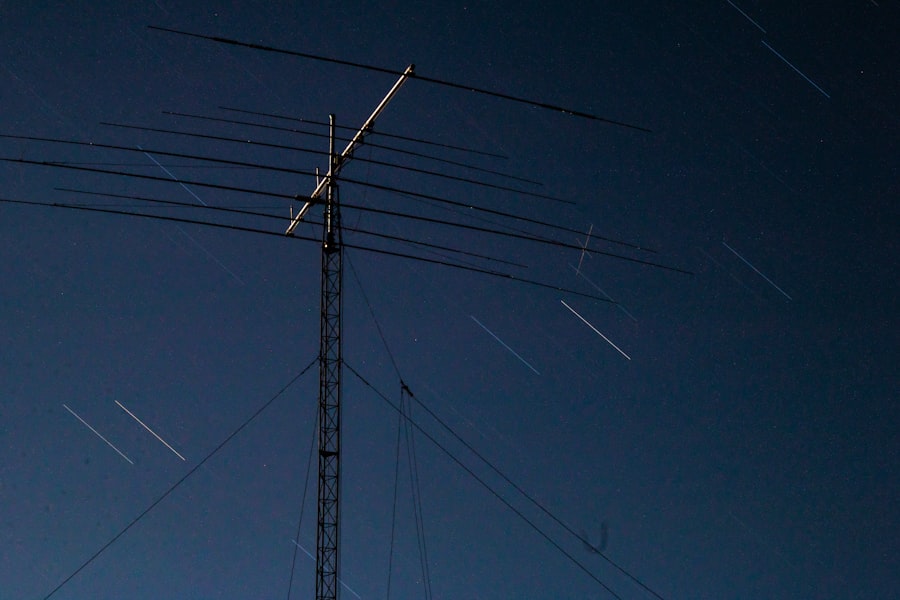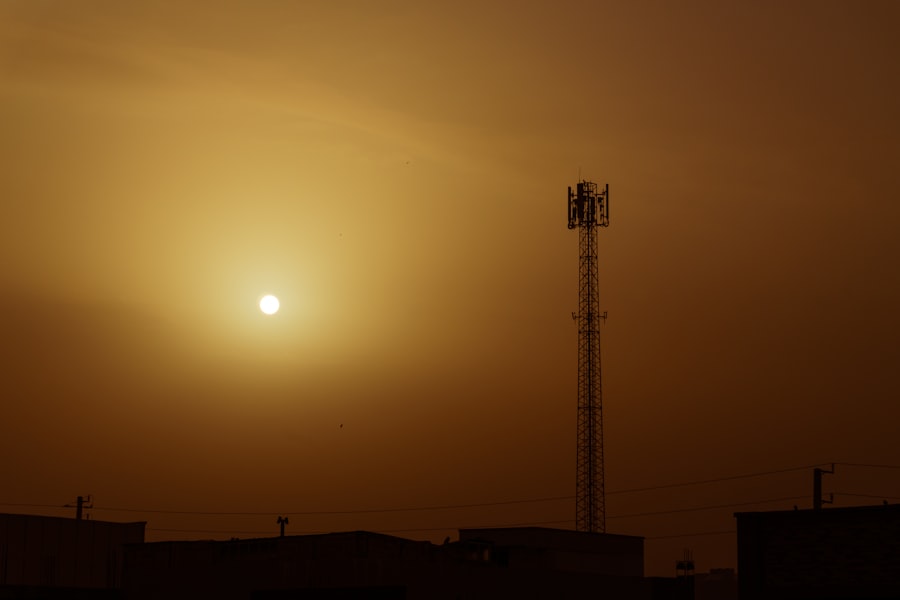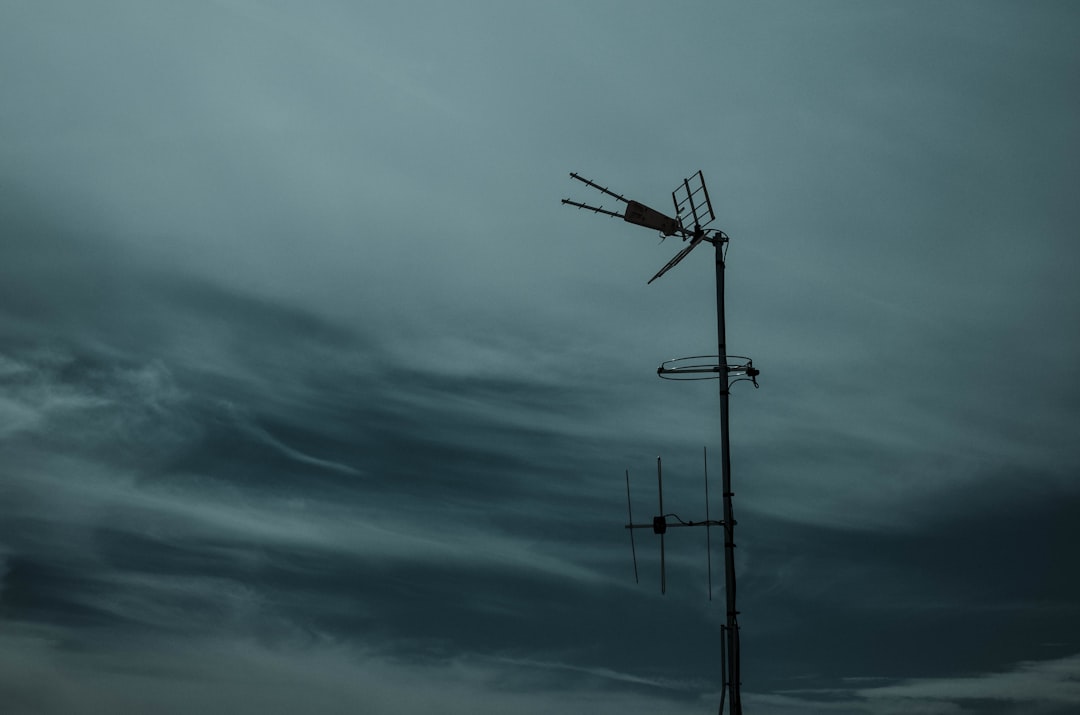Solar flares are among the most powerful phenomena in our solar system, capable of unleashing vast amounts of energy into space. These explosive bursts of radiation can have significant effects on Earth, particularly in the realm of communication and navigation systems. Solar flare radio blackouts occur when these intense bursts of electromagnetic radiation disrupt radio signals, leading to temporary communication failures.
As society becomes increasingly reliant on technology, understanding the implications of solar flare radio blackouts is more critical than ever. The phenomenon of solar flares and their associated radio blackouts is not merely a scientific curiosity; it has real-world consequences that can affect everything from daily communications to the functioning of critical infrastructure. As solar activity fluctuates with the solar cycle, the potential for these disruptions increases, making it essential for scientists and engineers to monitor and predict such events.
This article delves into the causes, impacts, and potential solutions related to solar flare radio blackouts, highlighting their significance in an increasingly interconnected world.
Key Takeaways
- Solar flare radio blackouts can disrupt communication systems, GPS and navigation systems, power grids, satellite operations, and pose potential dangers for astronauts and spacecraft.
- Solar flare radio blackouts are caused by the release of energy from the sun in the form of solar flares and coronal mass ejections.
- Communication systems can experience disruptions and outages during solar flare radio blackouts, impacting various industries and emergency response efforts.
- GPS and navigation systems can be affected by solar flare radio blackouts, leading to inaccurate positioning and timing information.
- Solar flare radio blackouts can impact power grids, leading to potential blackouts and damage to electrical infrastructure.
What Causes Solar Flare Radio Blackouts?
Solar flares are caused by the complex interactions of magnetic fields on the sun’s surface. When magnetic field lines become twisted and tangled, they can suddenly realign, releasing enormous amounts of energy in the form of radiation across the electromagnetic spectrum. This release can produce X-rays and ultraviolet light, which travel at the speed of light and reach Earth in a matter of minutes.
The intensity of a solar flare is measured using a classification system that ranges from A-class (the weakest) to X-class (the strongest), with X-class flares being capable of causing significant disruptions. When a solar flare occurs, it can lead to a sudden increase in ionization in the Earth’s upper atmosphere, particularly in the ionosphere. This layer of charged particles plays a crucial role in reflecting and refracting radio waves.
A sudden influx of ionization can disrupt the normal propagation of radio signals, leading to what is known as a radio blackout. The duration and severity of these blackouts depend on the strength of the solar flare and its position relative to Earth. Stronger flares, especially those classified as X-class, are more likely to cause widespread disruptions.
The Impact of Solar Flare Radio Blackouts on Communication Systems

The impact of solar flare radio blackouts on communication systems can be profound. Radio waves are essential for various forms of communication, including aviation, maritime operations, and emergency services. When a solar flare occurs, it can lead to temporary loss of communication capabilities, which can have serious implications for safety and coordination.
For instance, pilots rely on radio communications for navigation and air traffic control; a blackout could hinder their ability to receive critical information. Moreover, commercial radio broadcasts can also be affected during these events. Listeners may experience static or complete loss of signal, disrupting entertainment and information dissemination.
In an age where instant communication is expected, even brief interruptions can lead to confusion and frustration among users. The potential for widespread disruption underscores the importance of understanding solar flare radio blackouts and developing strategies to mitigate their effects.
The Effect of Solar Flare Radio Blackouts on GPS and Navigation Systems
| Metrics | Impact |
|---|---|
| Accuracy of GPS | Reduced during blackout periods |
| Availability of GPS signals | Intermittent or unavailable during blackouts |
| Navigation system performance | Compromised during blackout events |
| Communication disruptions | Potential for loss of communication signals |
Global Positioning System (GPS) technology has revolutionized navigation, providing precise location data for various applications ranging from personal navigation devices to military operations. However, solar flare radio blackouts pose a significant threat to GPS functionality. The ionospheric disturbances caused by solar flares can lead to inaccuracies in GPS signals, resulting in errors in positioning data.
For example, a pilot relying on GPS for landing may find that their position is misrepresented due to ionospheric interference caused by a solar flare. This could lead to dangerous situations if not properly managed.
Additionally, industries that depend on GPS for timing synchronization—such as telecommunications and financial services—may also experience disruptions that could ripple through various sectors.
Solar Flare Radio Blackouts and Power Grids
The impact of solar flare radio blackouts extends beyond communication systems; they can also affect power grids. While radio blackouts primarily disrupt high-frequency communications, the associated geomagnetic storms triggered by solar flares can induce electric currents in power lines. These geomagnetic induced currents (GICs) can overload transformers and other components within power grids, potentially leading to widespread outages.
Utilities must be vigilant during periods of heightened solar activity to protect their infrastructure from these potential threats. In some cases, operators may need to take preventive measures such as temporarily shutting down certain parts of the grid or adjusting load levels to mitigate risks. The interconnected nature of modern power systems means that a disturbance in one area can have cascading effects across regions, making it imperative for energy providers to understand and prepare for the impacts of solar flare radio blackouts.
How Solar Flare Radio Blackouts Affect Satellite Operations

Satellites play a crucial role in modern communication, weather forecasting, and scientific research. However, they are not immune to the effects of solar flare radio blackouts. When a solar flare occurs, it can create a surge of radiation that affects satellite electronics and communication systems.
This radiation can lead to temporary disruptions in satellite operations or even permanent damage in extreme cases. Satellites rely on radio signals for communication with ground stations; thus, any disruption caused by a solar flare can hinder data transmission and reception. This is particularly concerning for satellites involved in critical missions such as Earth observation or disaster response.
Engineers must continuously monitor space weather conditions to anticipate potential disruptions and implement contingency plans to ensure that satellite operations remain as unaffected as possible.
The Potential Dangers of Solar Flare Radio Blackouts for Astronauts and Spacecraft
Astronauts aboard the International Space Station (ISS) or other spacecraft are particularly vulnerable to the effects of solar flares. The radiation emitted during a solar flare poses health risks to astronauts who are outside the protective shield of Earth’s atmosphere. Increased exposure to this radiation can lead to acute health issues such as radiation sickness or long-term effects like increased cancer risk.
In addition to health risks, solar flares can also disrupt spacecraft systems and communications with mission control on Earth. During periods of heightened solar activity, mission planners must carefully monitor space weather forecasts and be prepared to implement safety protocols for astronauts in orbit. This may include moving astronauts into shielded areas within the spacecraft or temporarily halting extravehicular activities until conditions improve.
Predicting and Monitoring Solar Flare Radio Blackouts
The ability to predict and monitor solar flare radio blackouts is crucial for mitigating their impacts on technology and infrastructure. Scientists utilize various tools and techniques to observe solar activity and forecast potential flares. Satellites such as NASA’s Solar Dynamics Observatory (SDO) provide real-time data on solar phenomena, allowing researchers to analyze changes in solar behavior.
Forecasting models have improved significantly over the years, enabling scientists to provide warnings about impending solar flares and their potential impacts on Earth. These predictions allow industries reliant on communication systems—such as aviation and telecommunications—to prepare for possible disruptions. By understanding the patterns associated with solar activity, researchers continue to enhance predictive capabilities, ultimately leading to better preparedness for future events.
Mitigating the Impact of Solar Flare Radio Blackouts
Mitigating the impact of solar flare radio blackouts requires a multifaceted approach involving technology, policy, and public awareness. Industries that rely heavily on communication systems must invest in robust infrastructure capable of withstanding disruptions caused by solar activity. This may include developing alternative communication methods or enhancing existing systems to be more resilient against interference.
Public awareness campaigns can also play a vital role in preparing individuals and organizations for potential disruptions caused by solar flares. By educating people about the risks associated with solar activity and encouraging them to have contingency plans in place, society can better navigate the challenges posed by these natural phenomena.
Research and Advancements in Understanding Solar Flare Radio Blackouts
Ongoing research into solar flares and their effects continues to yield valuable insights into this complex phenomenon. Scientists are exploring various aspects of solar activity, including its relationship with Earth’s magnetic field and its impact on technology. Advancements in observational technology have allowed researchers to gather more precise data about solar flares and their consequences.
Collaborative efforts between space agencies, universities, and private organizations are fostering innovation in understanding solar flares. By sharing data and expertise, researchers are working towards developing more accurate predictive models that can help society prepare for future events more effectively.
Conclusion and Future Implications of Solar Flare Radio Blackouts
As society becomes increasingly dependent on technology for communication, navigation, and power distribution, understanding the implications of solar flare radio blackouts is paramount. These natural phenomena pose significant risks that can disrupt daily life and critical infrastructure. However, advancements in research and monitoring techniques offer hope for better preparedness in the face of such challenges.
Looking ahead, continued investment in research and technology will be essential for mitigating the impacts of solar flare radio blackouts. By fostering collaboration among scientists, engineers, and policymakers, society can develop strategies that enhance resilience against these unpredictable events. As our understanding deepens, so too does the potential for creating a safer environment where technology can thrive despite the whims of our sun.
Solar flares are powerful bursts of radiation from the sun that can cause significant disruptions to radio communications on Earth, known as radio blackouts. These events can have widespread effects on navigation systems, aviation, and even power grids. For a deeper understanding of the science behind solar flares and their impact on our planet, you can explore a related article on this topic at Freaky Science. This resource provides insights into the mechanisms of solar flares and the potential consequences of these cosmic events on modern technology.
WATCH THIS 🌍 Earth’s Magnetic Field Is About To Flip: The Crisis You Need to Know
FAQs
What are solar flare radio blackouts?
Solar flare radio blackouts are disruptions in radio communications caused by intense bursts of energy from the sun, known as solar flares. These bursts of energy can interfere with radio signals on Earth, particularly those in the high-frequency range.
How do solar flare radio blackouts occur?
Solar flare radio blackouts occur when the intense radiation and charged particles from a solar flare interact with the Earth’s ionosphere, causing disruptions in the propagation of radio waves. This can lead to a temporary loss of radio communication, particularly in the high-frequency bands.
What are the impacts of solar flare radio blackouts?
Solar flare radio blackouts can impact a wide range of radio communications, including aviation, maritime, and emergency services. They can also affect satellite communications and GPS systems, leading to potential disruptions in navigation and timing services.
How often do solar flare radio blackouts occur?
Solar flare radio blackouts are more common during periods of high solar activity, such as during the peak of the solar cycle. However, they can occur at any time, particularly when a large and powerful solar flare erupts from the sun.
Can solar flare radio blackouts be predicted?
While scientists can monitor the sun for signs of solar flares and predict the likelihood of their occurrence, it is challenging to predict the exact timing and intensity of a solar flare radio blackout. Efforts are ongoing to improve the forecasting of these events to mitigate their potential impacts.
